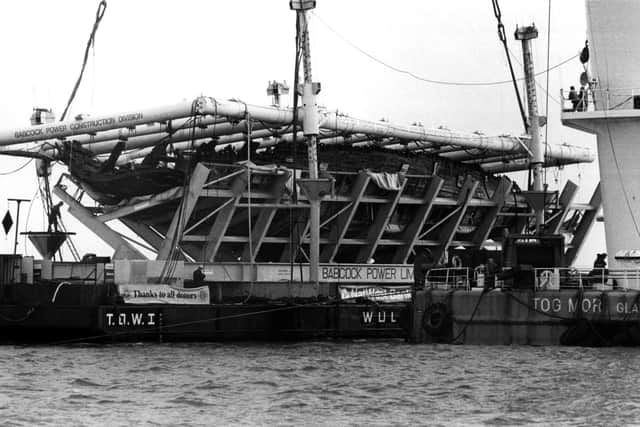Mary Rose ship was made up of multinational crew suggesting diverse backgrounds in Royal Navy, according to research
and live on Freeview channel 276
It is thought as many as three of the eight crew of the Tudor warship may have originated from southern European coasts, Iberia and North Africa.
Researchers say the remaining five crew members were likely to have been brought up in western Britain, with further analysis suggesting one of these men was of African ancestry.
Advertisement
Hide AdAdvertisement
Hide AdIt follows research by Portsmouth and Cardiff universities in 2019 that looked at the bone structure and DNA of 10 skeletons found on board before concluding four of the skeletons were of southern European heritage, with one seemingly from Morocco or Algeria.


The Mary Rose was a successful warship and served Henry VIII for 34 years.
She sank during the Battle of the Solent in 1545 resulting in the deaths of the vast majority of her crew.
Scientists at Cardiff University are working with the Mary Rose Trust and the British Geological Survey to reveal the ancestry, childhood origins and diets of some of the crew who perished on the ship.
Advertisement
Hide AdAdvertisement
Hide AdFirst author Jessica Scorrer said: ‘Our findings point to the important contributions that individuals of diverse backgrounds and origins made to the English navy during this period.
‘This adds to the ever-growing body of evidence for diversity in geographic origins, ancestry and lived experiences in Tudor England.’
In 1982, 437 years after she sank, the remains of the Mary Rose and 19,000 artefacts were recovered, and many are conserved and displayed in Portsmouth Historic Dockyard.
Researchers used a technique called multi-isotope analysis on teeth to investigate where the eight crew members spent their early years and what their diet was like.
Advertisement
Hide AdAdvertisement
Hide AdChemical tracers from the food and water they consumed in childhood, which provide evidence for geographical location, remain within the teeth.
Dr Richard Madgwick, also from Cardiff University, said: ‘We have been able to reconstruct the biographies of eight people from the Tudor period in much more detail than is usually possible.
‘This has shown their diverse origins and provided the first direct evidence for mariners of African ancestry in the navy of Henry VIII.’
The eight crew members featured in the research have also formed the basis of a temporary exhibition – The Many Faces Of Tudor England – at the Mary Rose Museum in Portsmouth.
Advertisement
Hide AdAdvertisement
Hide AdDr Alexzandra Hildred, from the Mary Rose Trust, added: ‘The variety and number of personal artefacts recovered which were clearly not of English manufacture made us wonder whether some of the crew were foreign by birth.
‘However, we never expected this diversity to be so rich. This study transforms our perceived ideas regarding the composition of the nascent English navy.’
– The study, Diversity aboard a Tudor warship: investigating the origins of the Mary Rose crew using multi-isotope analysis, is published in the journal Open Science.
A message from the Editor, Mark Waldron
You can subscribe here for unlimited access to our online coverage, including Pompey, for 27p a day.
Comment Guidelines
National World encourages reader discussion on our stories. User feedback, insights and back-and-forth exchanges add a rich layer of context to reporting. Please review our Community Guidelines before commenting.
